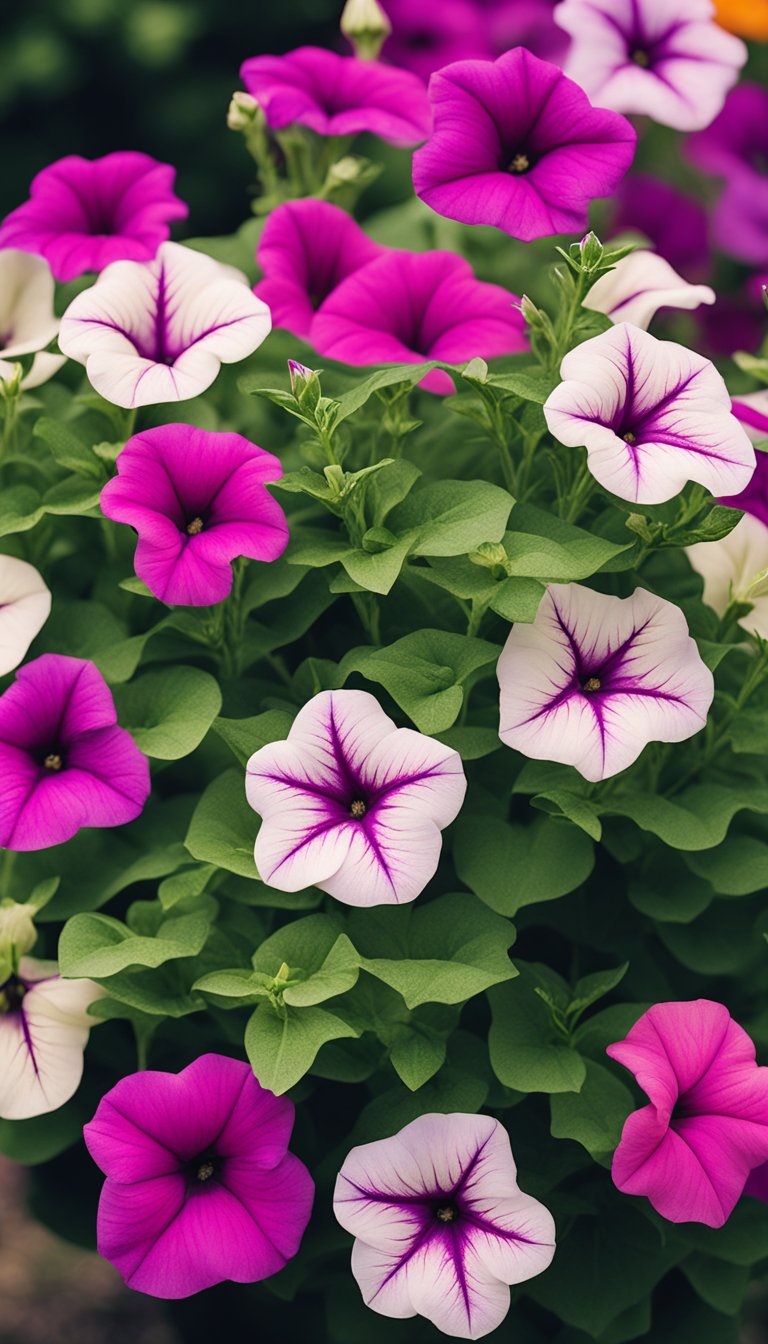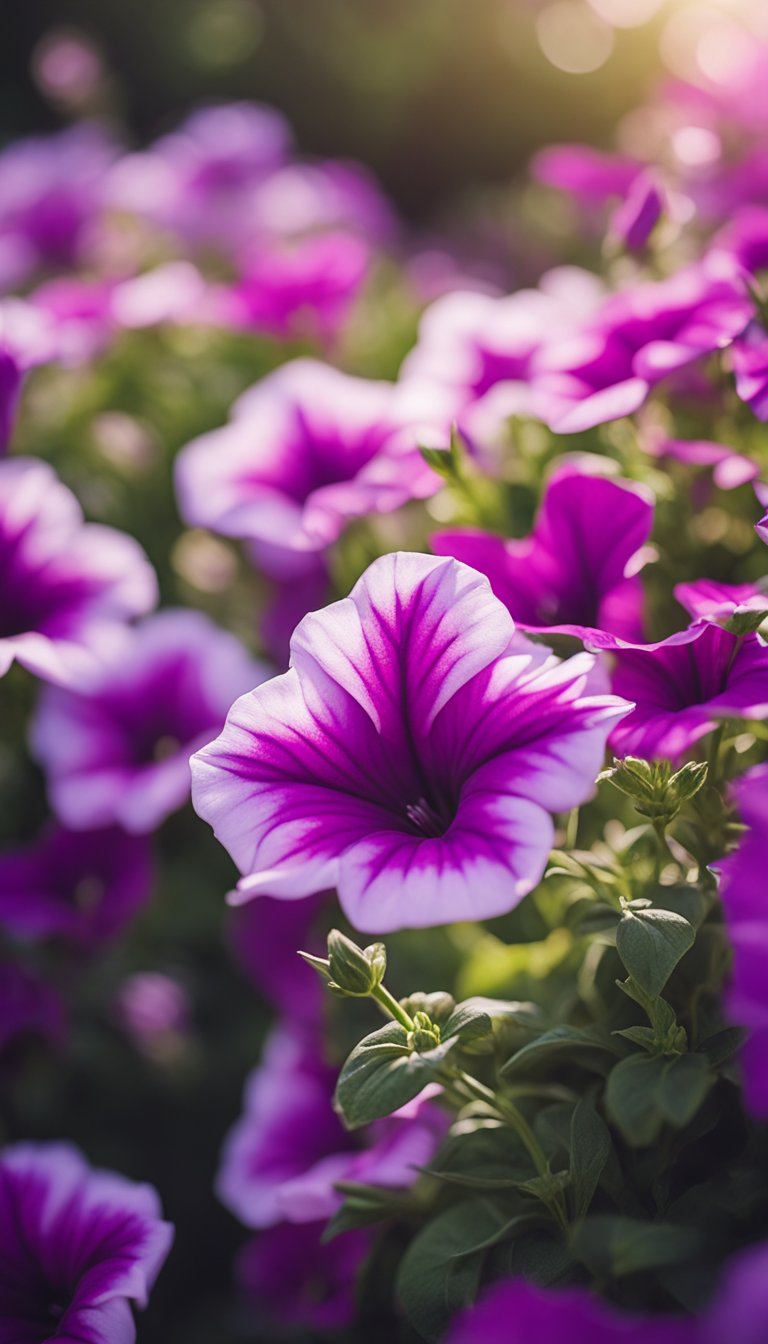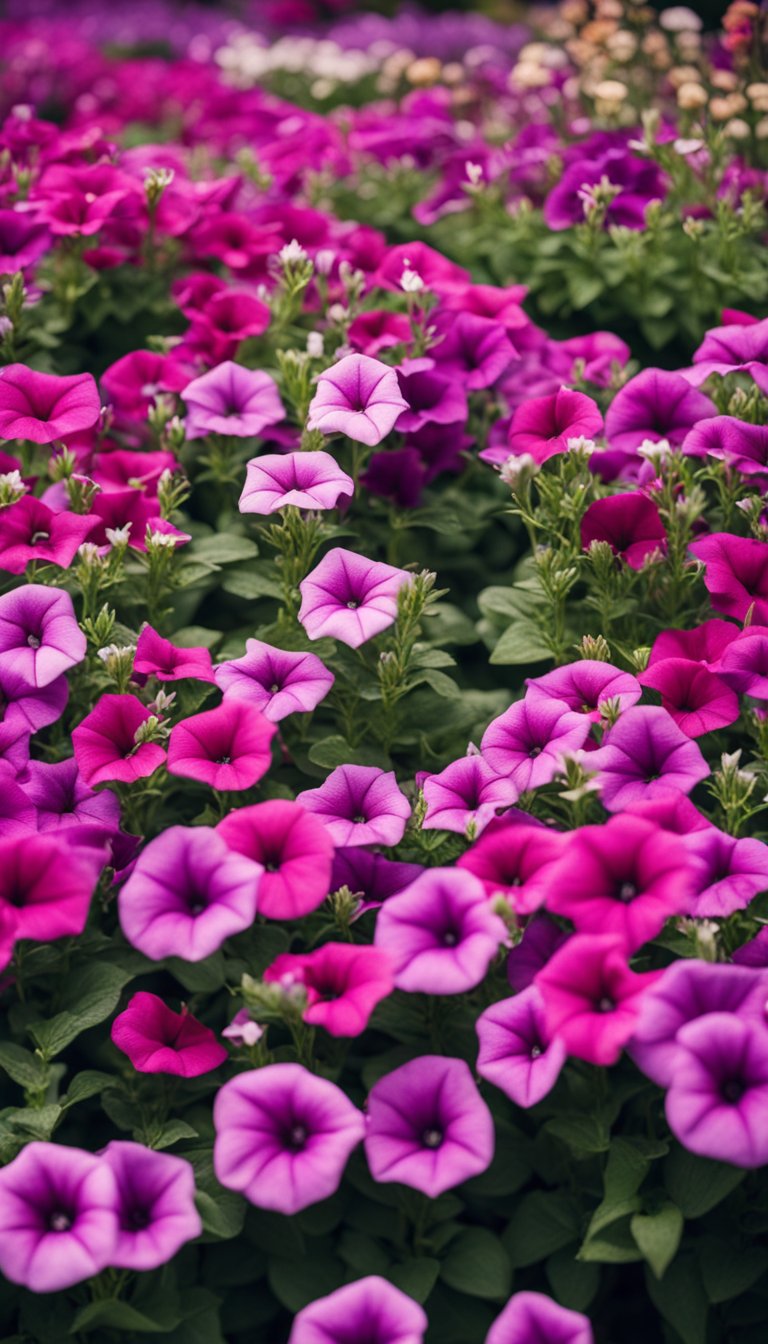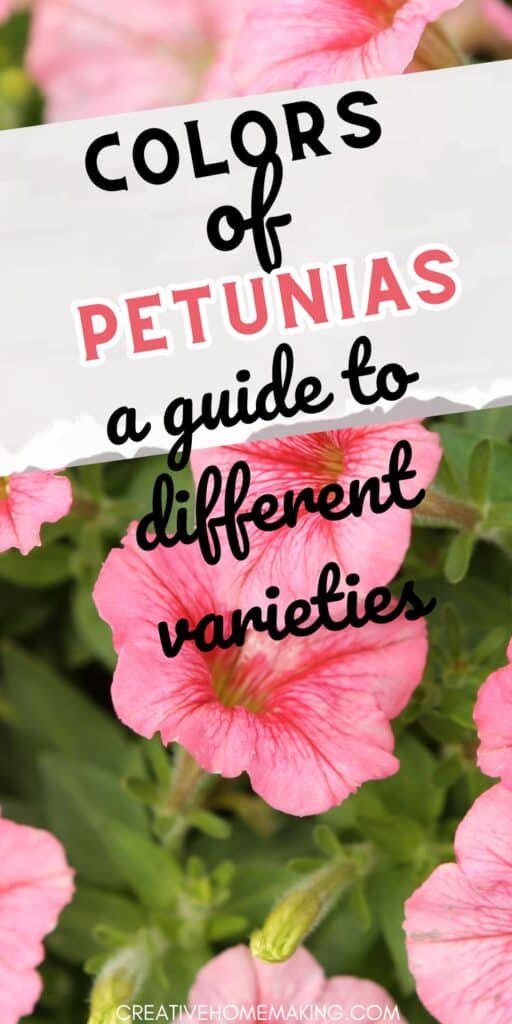Looking to add some color to your garden? Look no further than petunias! Petunias are popular annuals that come in a wide variety of colors, making them a great choice for gardeners who want to add some vibrancy to their outdoor spaces.
This post may contain affiliate links.
Petunias are known for their colorful blooms, which can range from deep purples and blues to bright pinks, reds, and yellows. With so many different colors to choose from, it’s easy to find a petunia variety that will complement your existing landscaping or add a pop of color to a drab corner of your yard.
Whether you’re looking to create a bold, eye-catching display or simply want to add a few colorful accents to your garden, petunias are a great choice. Their bright blooms and easy-to-care-for nature make them a favorite among gardeners of all skill levels. So why not add a splash of color to your outdoor spaces with some beautiful petunias?
Types of Petunias
Petunias are a popular garden flower that comes in a variety of types. Here are the four main types of petunias that you can choose from.
Grandiflora Petunias
Grandiflora petunias are known for their large, ruffled flowers that can grow up to 5 inches in diameter. They come in a wide range of colors, including pink, purple, red, blue, and white. These petunias are great for adding a pop of color to your garden or for use in hanging baskets.
Multiflora Petunias
Multiflora petunias have smaller flowers than grandiflora petunias, but they make up for it in quantity. These plants produce a lot of flowers, making them great for adding color to large areas of your garden. They come in a wide range of colors, including pink, purple, red, and white.
Milliflora Petunias
Milliflora petunias are the smallest type of petunias, with flowers that are less than 2 inches in diameter. Despite their small size, they pack a lot of color into a small space. They are great for use in containers or for planting in the front of your garden beds.
Related Article: How to Grow Zinnias in Pots: A Beginner’s Guide
Spreading Petunias
Spreading petunias are trailing plants that are great for use in hanging baskets or for cascading over walls or containers. They produce a lot of flowers and come in a wide range of colors, including pink, purple, red, and white.
No matter which type of petunia you choose, you are sure to add a beautiful pop of color to your garden.
Cultivation and Care

Petunias are a popular choice for gardeners due to their vibrant colors and easy-to-care-for nature. With the right care, your petunias can thrive and provide a beautiful display of colors throughout the growing season. Here are some tips on how to cultivate and care for your petunias.
Sunlight and Shade
Petunias need plenty of sunlight to grow and bloom. They thrive in full sun, which means they need at least six hours of direct sunlight per day. However, they can also tolerate some shade, especially in hot climates. If you live in a hot climate, it’s best to plant your petunias in an area that receives some shade during the hottest part of the day.
Related Article: Are Zinnias Edible? A Friendly Guide to Zinnia Flowers as Food
Watering and Moisture
Petunias need regular watering to keep the soil moist. However, be careful not to overwater them, as this can lead to root rot. Water your petunias deeply once a week, and more often during hot, dry weather. If you’re not sure whether your petunias need water, stick your finger into the soil. If it feels dry to the touch, it’s time to water.
Soil and Fertilization
Petunias prefer well-draining soil that’s rich in organic matter. If your soil is heavy or clay-like, mix in some compost or other organic matter to improve drainage. Petunias also benefit from regular fertilization. Use a balanced fertilizer every two to three weeks during the growing season to promote healthy growth and blooming.
Pruning and Deadheading
Petunias benefit from regular pruning and deadheading. This helps to keep the plants compact and encourages more blooming. Deadheading involves removing the spent flowers from the plant to promote new growth. Pruning involves cutting back the stems to promote branching and more blooms. You can prune your petunias by cutting back the stems by about one-third every few weeks.
Related Article: How to Grow Zinnias in Pots: A Beginner’s Guide
Color Varieties and Patterns
Petunias come in a wide range of colors and patterns, making them a versatile choice for any garden or landscape. Here are some of the most popular color varieties and patterns of petunias that you can choose from:
Vibrant Solids
Petunias are known for their vibrant solid colors that range from bright reds, whites, yellows, pinks, and purples. These colors are perfect for creating a bold and eye-catching display in your garden. You can choose from a variety of shades and hues to match your garden’s color scheme.
Striking Patterns
Petunias also come in striking patterns that can add interest and texture to your garden. Stripes, speckles, and dots are just some of the patterns that you can find in petunias. These patterns can be subtle or bold, depending on your preference.
Unique Splashes and Stripes
If you’re looking for something truly unique, petunias with splashes and stripes are a great choice. These petunias have a combination of solid colors and patterns, creating a one-of-a-kind look. Black petunias are also available and can add a dramatic touch to your garden.
No matter what color or pattern you choose, petunias are sure to add a pop of color and beauty to your garden. With their wide range of colors and patterns, you can create a garden that is uniquely yours.

Planting Ideas
Petunias are versatile plants that can be used in a variety of ways to add color and beauty to your garden. Here are some ideas for planting petunias in different settings.
Hanging Baskets and Containers
Petunias are perfect for hanging baskets and containers. They are easy to care for and come in a variety of colors and sizes. You can mix and match different petunia colors and varieties to create a stunning display. To keep your petunias looking their best, make sure they get plenty of sunlight and water.
Ground Cover and Borders
Petunias make great ground cover and borders. They are low-growing and spread quickly, making them ideal for filling in gaps and covering large areas. You can plant them along the edge of a garden bed or use them to create a colorful border around a tree or shrub. They come in a wide range of colors, so you can choose the ones that best complement your existing landscaping.
Window Boxes and Flower Beds
Petunias are a popular choice for window boxes and flower beds. They add a pop of color and are easy to care for. You can mix and match different petunia colors and varieties to create a beautiful display. To keep your petunias looking their best, make sure they get plenty of sunlight and water. You can also add fertilizer to promote healthy growth and vibrant blooms.
No matter how you choose to plant your petunias, they are sure to add beauty and color to your garden. With a little care and attention, you can enjoy their vibrant blooms all season long.

Petunias and Wildlife
Petunias are not only beautiful to look at, but they also attract wildlife to your garden. Hummingbirds are particularly fond of petunias. The trumpet-shaped flowers of petunias are perfect for the hummingbirds to feed on nectar. The bright colors of petunias, such as red, pink, and purple, are especially attractive to hummingbirds. By planting petunias in your garden, you can attract these beautiful birds and enjoy their presence.
However, petunias can also attract pests such as aphids and spider mites. These pests can damage the plants and reduce their beauty. To prevent this, you can use natural pest control methods such as introducing ladybugs to your garden. Ladybugs feed on aphids and other pests, and can help keep your petunias healthy and beautiful.
In addition to hummingbirds and pests, petunias can also attract other wildlife such as bees and butterflies. Bees are important pollinators and help to fertilize the flowers, while butterflies add a touch of beauty to your garden. By planting petunias, you can help to support these important creatures and create a beautiful and vibrant garden.
Frequently Asked Questions
What are the latest introduced petunia colors this year?
If you’re looking for the latest petunia colors, you’ll be pleased to know that breeders are always coming up with new varieties. This year, some of the new petunia colors include deep purple, soft pink, and vibrant orange. Be sure to check with your local garden center or nursery to see what new colors they have in stock.
How do I care for live petunia plants in pots?
Petunias are relatively easy to care for in pots. Make sure to use a good quality potting soil and keep the soil moist but not waterlogged. Petunias like full sun, so make sure to place your pots in a sunny location. Deadhead regularly to encourage more blooms. Fertilize every two weeks with a balanced fertilizer.
What are some uncommon petunia hues that gardeners seek?
While most petunias come in shades of pink, purple, and white, there are some less common hues that gardeners seek. These include black, blue, and yellow. Keep in mind that some of these colors may be harder to find than others.
Which petunia color combinations are most visually appealing in a garden?
There are many different petunia color combinations that can be visually appealing in a garden. Some popular combinations include pink and white, purple and white, and red and white. Experiment with different combinations to see what works best in your garden.
Can you explain the significance behind different petunia colors?
While there is no universal significance behind different petunia colors, some gardeners believe that certain colors can convey different meanings. For example, pink petunias are often associated with love and romance, while purple petunias are often associated with royalty and luxury.
During which months are petunias known to bloom?
Petunias are known to bloom from late spring until the first frost. However, the exact blooming period can vary depending on the specific variety and growing conditions.
Follow my gardening board on Pinterest.



